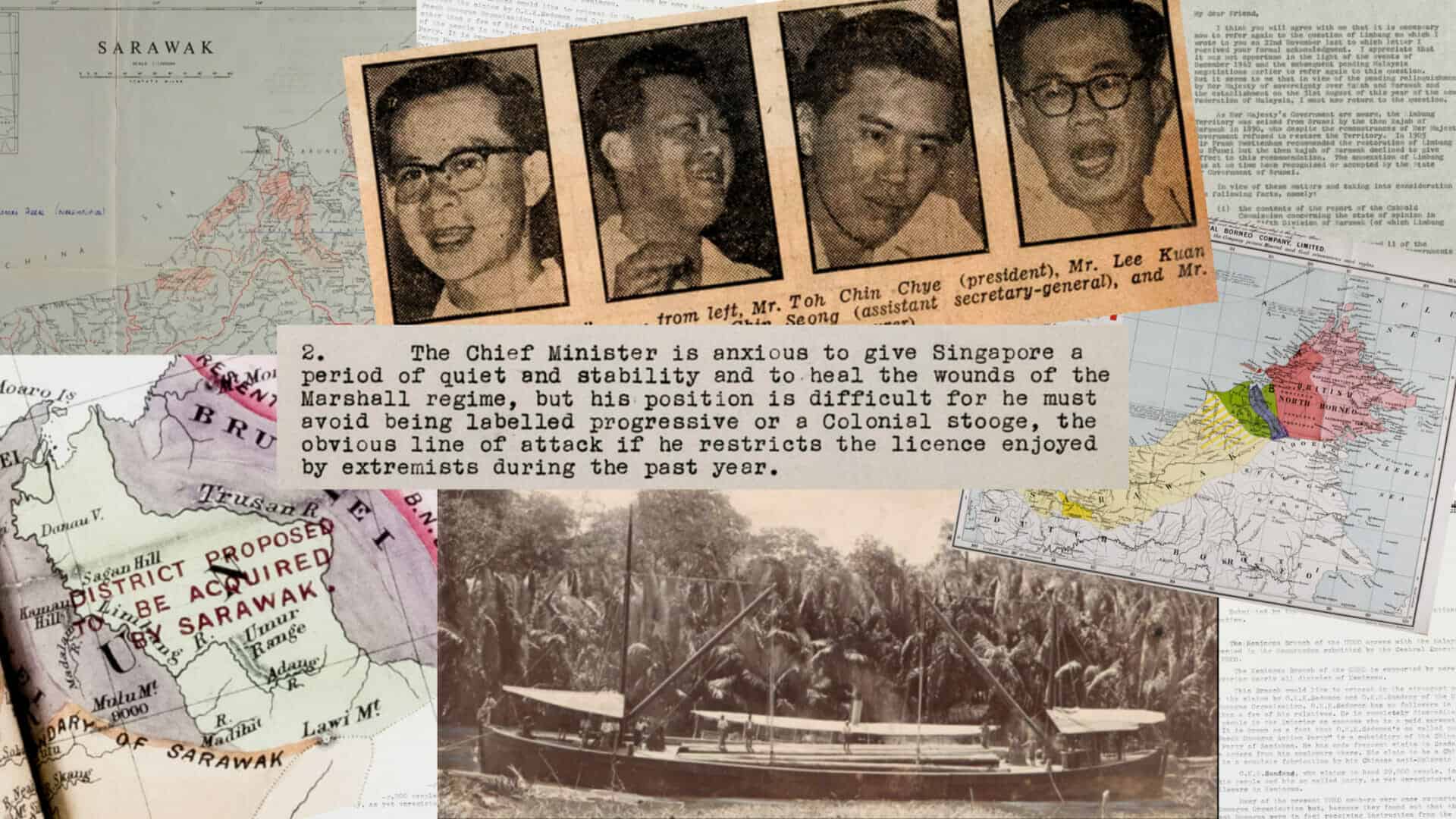|By Julia de Mowbray, Publisher at Gale |
September 2023 marks the hundredth anniversary of the birth of Lee Kuan Yew (1923—2015), the founder of the People’s Action Party, Prime Minister of Singapore between 1959 and 1990, and a Member of the Singapore Parliament until his death in 2015. This month also sees the launch of State Papers Online Colonial: Asia, Part II: Singapore, East Malaysia and Brunei, the digitisation of the British Colonial Office files documenting the Colonial Office’s activities in these territories until independence. The coincidence is poignant as Lee Kuan Yew founded the People’s Action Party to fight for independence from colonial rule, and led Singapore first to independence from the British, then from Malaysia, and on to an envied economic and social success story.
Singapore and Lee Kuan Yew
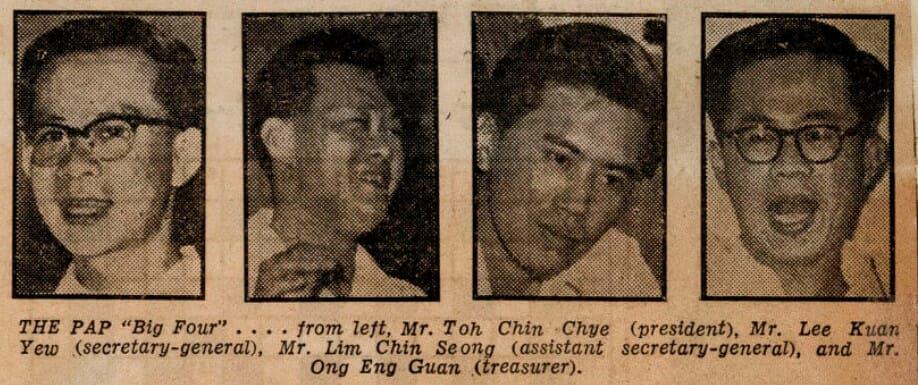
Political Parties in Federation of Malaya and Singapore. People’s Action Party, Singapore. 1954-1956. MS Records of the British Colonial Office CO 1030/316. The National Archives (Kew, United Kingdom). State Papers Online Colonial, https://link.gale.com/apps/doc/ABVFUH432623957/SPOC?u=webdemo&sid=bookmark-SPOC&xid=34e2a487 (image 22)
There are around 250 documents in this archive mentioning Lee Kuan Yew, including his early work as a barrister representing trade unions or the left-leaning student magazine Fajar from charges of being a “seditious publication”; Lee Kuan Yew and the People’s Action Party (PAP) considering the proposed period of emergency in August 1955; and a file on the People’s Action Party containing letters from Lee Kuan Yew to the Chief Secretary of Singapore in June 1956 about police refusal to permit public meetings, and a detailed Singapore Police Intelligence Journal report on the formation, members and activities of the PAP in the same file.

Political Parties in Federation of Malaya and Singapore. People’s Action Party, Singapore. 1954-1956. MS Records of the British Colonial Office CO 1030/316. The National Archives (Kew, United Kingdom). State Papers Online Colonial, https://link.gale.com/apps/doc/ABVFUH432623957/SPOC?u=webdemo&sid=bookmark-SPOC&xid=34e2a487 (Image 24)
The most recent files are from 1963, when Lee Kuan Yew had been Prime Minister of Singapore for over three years, and was dealing with amendments to the Malaysian Federation Agreement and Singapore’s proposed assumption of defence and external affairs from the UK.
But this archive also contains the stories of four other territories located in the northern part of the island of Borneo: Sabah, Labuan, Sarawak, and Brunei.
• Brunei
Brunei retained its independence, despite becoming a British protectorate in 1888 with a British Resident from 1906. It did suffer badly from land grabs in the form of grants or cessions of territory to trading companies as well as to Sarawak. The Sultan of Brunei expected British Government help to resist the demands of the Rajah of Sarawak for more Brunei territory, only to receive a reply in September 1876 that Her Majesty’s Government would not interfere unless her rights were being challenged.
One of Brunei’s territories much discussed in the documents is Limbang District which was eventually seized by Rajah Brooke of Sarawak in 1890.
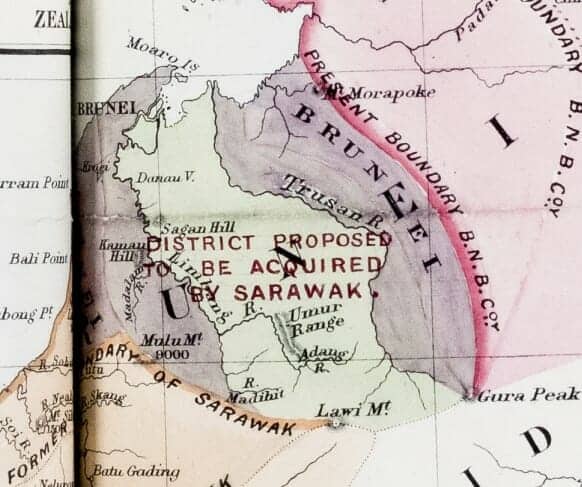
Cession of Trusan & Limbang Districts to Sarawak. 15 July 1885. MS Records of the British Colonial Office CO 144/60/74. The National Archives (Kew, United Kingdom). State Papers Online Colonial, https://link.gale.com/apps/doc/TVQUCX034597748/SPOC?u=webdemo&sid=bookmark-SPOC&xid=d0e4578a (image 943).
Much later, in 1963, it was the subject of letters from the Sultan of Brunei to the British government when he urged that Limbang should not be ceded to Malaysia with the rest of Sarawak. Limbang District was in the middle of Brunei and its loss divided Brunei into two.
“I would suggest that the Territory of Limbang should be excluded from the relinquishment of Her Majesty’s sovereignty over Sarawak at the end of next month and that no change in sovereignty affecting this area should take place until proper steps have been taken to ensure that any change of sovereignty is in accordance with the genuine wishes of the Limbang people”.
– The Sultan of Brunei to the British Government (CO 1030/1671, image 32)
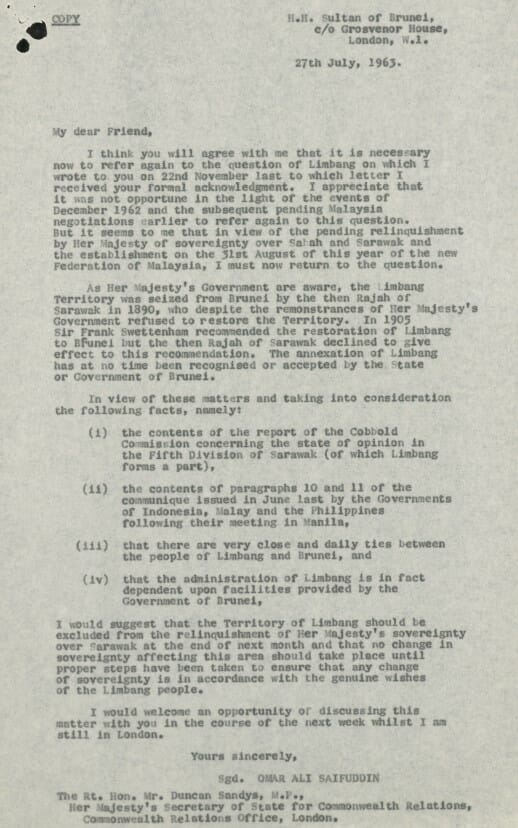
Brunei: Annexation of Limbang district. 1963-1965. MS Records of the British Colonial Office CO 1030/1671. The National Archives (Kew, United Kingdom). State Papers Online Colonial, https://link.gale.com/apps/doc/UWJQAI878876375/SPOC?u=webdemo&sid=bookmark-SPOC&xid=a49488e7&pg=1 (image 32)
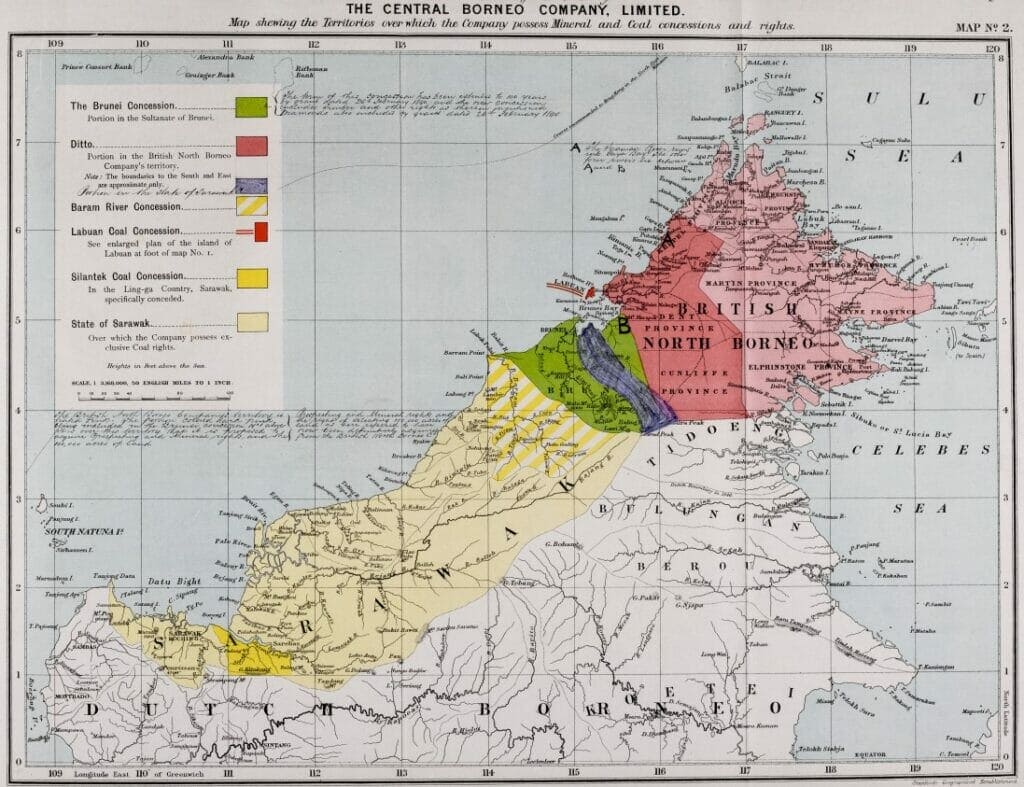
Concessions in Brunei. 21 Jan. 1897. MS Records of the British Colonial Office CO 144/71/33. The National Archives (Kew, United Kingdom). State Papers Online Colonial, https://link.gale.com/apps/doc/TYDODY806417838/SPOC?u=webdemo&sid=bookmark-SPOC&xid=296cb5f6 (image 337).
• Sabah
Sabah, situated at the North end of the island of Borneo, is a fascinating territory that was administered by a governor appointed by the British North Borneo Company from 1881 until the Japanese Occupation in 1941, in a not dissimilar way to the East India Company’s rule over India.
The peoples of Sabah belong to many different ethnic and sub-ethnic groups, the main ones being the Dusan, Bajau, and Murut. Details of their lives can be found among documents covering a range of issues. One example is the 1962 survey of local views on Sabah joining the Malaysian Federation. They were submitted in English, Chinese or Malay.
One of the submissions from the Keningau district was from O.K.K. Sedomon opposing the plan:
“I, O.K.K. Sedomon, have been a Native Chief for very many years and I think I can truly call myself the acknowledged leader of the Dusan, Murat and Bisaya tribes, numbering about 180,000 of North Borneo’s 450,000 population. More than 25 years ago I was placed in charge of the first native administration centre ever established in this country at Bingkor. My people ask me to tell this Commission –
1. That we, the Dusun, Murut and Bisaya tribes forming a total population of 180,000, are against the proposed Malaysia plan because we cannot agree to exchange a government which is the only government that we know, for a Malayan Government which is a complete stranger to us. It amounts to giving our life and security to a stranger whom we know nothing about.
2. That we natives ask this Commission, why so suddenly, North Borneo, a very peaceful Colony of Great Britain, and under its protection and administration for more than half a century, should be given so little time and grace to decide on the Malaysia Plan” (CO 947/24, images 18-20)
However, O.K.K. Sedomon’s claims were contested by the Chairman of the United National Kadazan Organisation, who supported the proposed plan:
“This Branch would like to protest in the strongest possible terms against the claims by Ο.Κ.Κ. Sedomon and O.K.K. Sundang of the United National Pasok Momogun Organisation. O.K.K. Sedomon has no followers in the Interior other than a few of his relatives. He is completely discredited in the eyes of the people in the Interior as someone who is a paid servant of the United Party. It is known as a fact that O.K.K. Sedomon’s so called party “Tungag Tokou Pasok Momogun Action Party” is a subsidiary of the Chinese Controlled United Party of Sandakan. He has made frequent visits to Sandakan recently to take orders from his employers there. His claim to be a Chief of 180,000 people is a complete fabrication by his Chinese anti-Malaysia employers.” (CO 947/24, image 5)
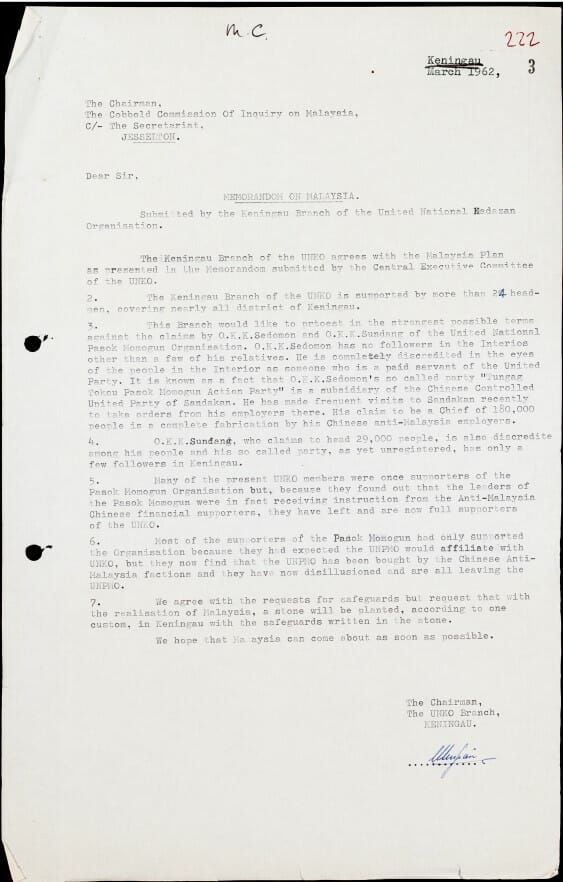
North Borneo Papers. Submissions – Keningau, Sipitang, Tenom, Beaufort, Papar and Tuaran. 1962. MS Records of the British Colonial Office CO 947/24. The National Archives (Kew, United Kingdom). State Papers Online Colonial, https://link.gale.com/apps/doc/MIPDFN403800063/SPOC?u=webdemo&sid=bookmark-SPOC&xid=0b127705&pg=1 (image 5)
Reading through other submissions, one finds some districts largely supportive of the proposal and others not – because they don’t know anything about Malaysia, they fear the unknown, or fear losing direct governance by the British, have a settled way of life and don’t want any changes, or would prefer British protection until they are ready for independence, or were concerned about losing British defence, or were wary of an increase in taxes.
Wong Fook Siang, a Sino-Dusun, Vice President of the District Council of Kuala Penyu, was one to express the preference for self-government before merging with Malaysia:
“We do not want to rush by merging with Malaysia, knowing that we are far more backward in comparison with the people of Malaya and Singapore, because we need the British Government to stay as it is now and carry on for some more years in order to guard and guide us until maturity when we shall be in position to handle the reins of Government satisfactorily thus relieving the expatriate officers gradually in slow stages. This Malaysia idea will transfer North Borneo to Kuala Lumpur and deny us of our right to control this country which is ours” (CO 947/24, image 87)
• Sarawak
Sarawak is located along the northwest shore of Borneo. The documents on Sarawak relate the arrival in 1838 of the British soldier, James Brooke; his relations with the Sultan of Brunei and role as Rajah of Sarawak (the first of the “White Rajahs”), a position bestowed in 1841 by the Sultan of Brunei in gratitude for Brooke’s assistance in suppressing a rebellion; to Charles Vyner Brooke’s cession of Sarawak to the British Government after World War II, fearing the territory was no longer self-supporting following the devastation of the War, among other considerations.. The Cession Bill was submitted to the Council Negri of Sarawak in May 1946 and passed by 19 votes to 16. The Malays and Indians voted against; the Chinese, Eurasians and Europeans voted in favour (see “Top secret” file: CO 537/1633, image 339, among others).
In 1963, a “Progress Report on Flood Relief and Rehabilitation Work” (images 27-52) relates the damage done to Sarawak by floods that January. Over 35,000 people were affected, 558 houses were completely destroyed and many crops and livestock were lost. Documents in this archive cover the significant fund-raising responses by various administrative bodies, private clubs, businesses and charities. The documents not only narrate the reaction to the terrible flooding, but reveal the attitude of the authorities to the local peoples and businesses, the crops and livestock then farmed, and something of the social scene of the more wealthy, with donations coming from sports and social clubs.
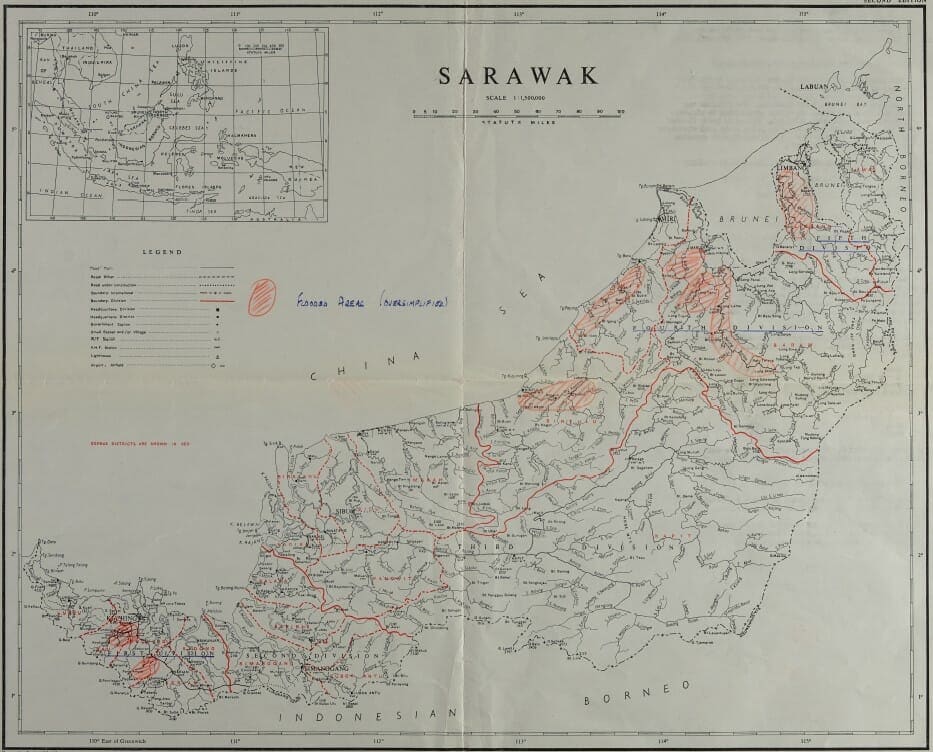
Sarawak floods. 1963. MS Records of the British Colonial Office CO 1030/1679. The National Archives (Kew, United Kingdom). State Papers Online Colonial, https://link.gale.com/apps/doc/UWUCKL669204239/SPOC?u=webdemo&sid=bookmark-SPOC&xid=b1064353 (image 69)
State Papers Online Colonial: Asia, Part II: Singapore, East Malaysia and Brunei contains over 3,000 files and volumes of records dating from the 1840s to 1960s. They cover the colonial administration and devolvement to independence, the development of agriculture and industry from supplying local needs to international trade markets, particularly the rubber and timber trades, and how the indigenous and migrated communities evolved under the changing governance and global development from the nineteenth century right through to the later twentieth century. Here are many starting points for new research topics, or the documents to revisit established subjects with new eyes.
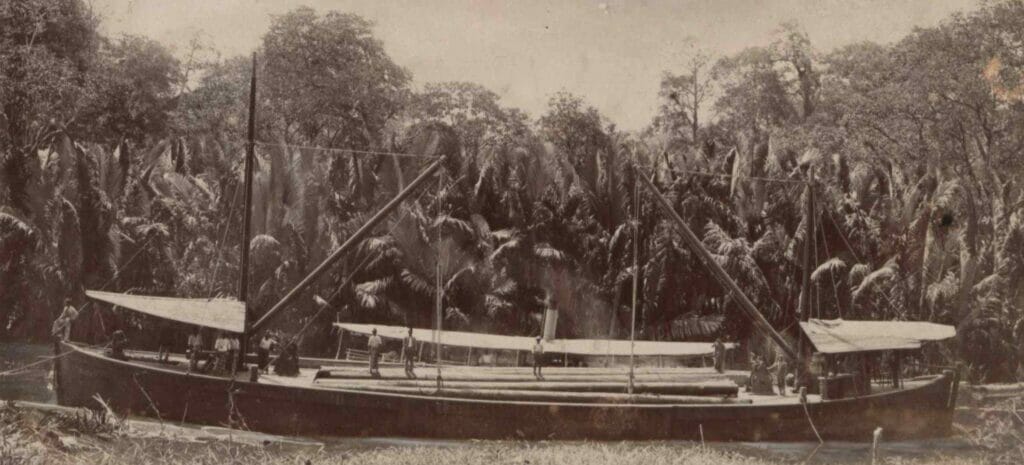
Borneo. 41. [View of cleared land and low palms] (1 photo). 42. [View of boat moored in forest] (1 photo). Late 19th Century. MS Records of the British Colonial Office CO 1069/532/25. The National Archives (Kew, United Kingdom). State Papers Online Colonial, https://link.gale.com/apps/doc/ZMFNZL737536168/SPOC?u=webdemo&sid=bookmark-SPOC&xid=01c064b2&pg=25
If you enjoyed reading about the content contained within State Papers Online Colonial: Asia, Part II: Singapore, East Malaysia and Brunei you might enjoy:
- Asia, as Recorded in British Colonial Office Files
- Decolonisation in the British Empire in Asia: The Malayan Emergency and Singapore
- Indentured Indian Workers and Anti-Colonial Resistance in the British Empire
- Decolonization: Politics and Independence in Former Colonial and Commonwealth Territories
- Uncovering the History of Twentieth-Century Hong Kong, China, and the World
Blog post cover image citation: A montage of images from this blog post.

